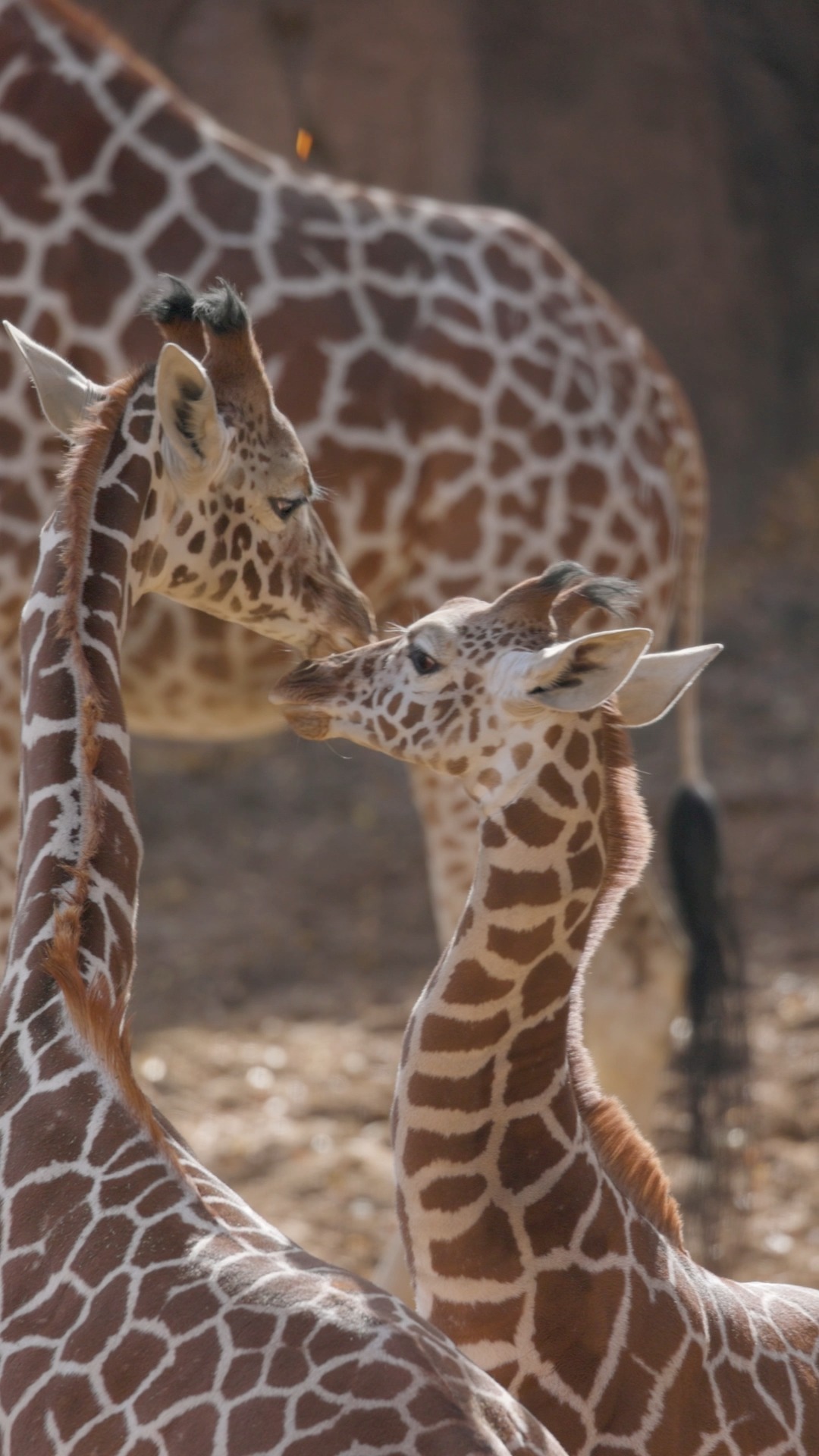- Exploration of giraffe biology and behavior
- Insight into zoo management strategies for giraffes
- Discussion on wildlife conservation efforts for giraffes
- The ecological importance of giraffes in their native habitats
- Public engagement and education on giraffes through social media
Giraffes, often referred to as nature’s gentle giants, captivate the imagination with their towering necks and serene demeanor. An intriguing species occupying unique ecological niches, giraffes are herbivorous mammals best known for their long-necked adaptation, evolved to access foliage at heights that are out of reach for other herbivores. Scientifically known as Giraffa camelopardalis, these magnificent creatures are members of the family Giraffidae, a lineage that includes the smaller, lesser-known okapi.
At the heart of discussions around giraffe biology is their distinctive physiology. Adult giraffes stand between 16 to 20 feet tall, making them the tallest terrestrial animals on Earth. Their extended necks, comprising only seven vertebrae—just like in humans—are elongated via enhanced vertebral bodies rather than additional skeletal segments. Such a structure not only aids in browsing on higher foliage but has also sparked an evolutionary arms race, influencing sexual selection. Males use their necks as weapons in a behavior called “necking,” where they swing their heads like hammers to establish dominance and mating rights.
Zoo management practices reflect the complexities involved in maintaining giraffe populations in captivity. A critical aspect of this is the design of habitats that mimic their natural environment. Giraffes require ample space to wander and exercise, tall trees whose branches offer browsing opportunities, and flat terrain to prevent leg injuries. Careful attention to social dynamics is also essential, with herds often comprising a mixture of males and females to encourage natural sociability. Specialized diets are provided to match their high-fiber needs, using alfalfa, browse, and specially formulated pellets, ensuring their nutritional requirements are met.
Education and public engagement play crucial roles in keeping conservation initiatives alive and effective. Social media platforms like Instagram serve as powerful tools for this purpose. Sharing captivating visuals and engaging narratives about giraffes can boost public interest and support for conservation efforts. This engagement also serves an educational purpose, familiarizing the public with challenges like habitat loss and poaching, which threaten giraffe populations. Such platforms amplify experts’ voices and foster community involvement, sparking a collective enthusiasm to conserve these beautiful giants.
Wildlife conservation efforts address the urgent need to protect giraffe populations in their native ecosystems. Populations have plummeted due to habitat fragmentation, illegal hunting, and human-wildlife conflict. Organizations actively work to counter these threats through various strategies, including habitat restoration, anti-poaching measures, and community-based conservation programs. Conservationists also engage in rigorous scientific research, tracking population dynamics using satellite collars and analyzing genetic diversity to inform breeding programs and maintain healthy populations.
The ecological role of giraffes within their natural habitats extends beyond their striking presence. Giraffes act as keystone species, shaping vegetation dynamics by selectively browsing, which impacts the growth and distribution of tree species. This browsing can facilitate a balanced ecosystem by controlling the density of woody plants, thereby creating suitable habitats for other species. Additionally, they play an indirect role in seed dispersal through defecation, fostering plant growth and diversity.
Ultimately, initiatives to conserve giraffes demand a comprehensive approach integrating biology, zoo management, conservation efforts, and public engagement. By understanding the intricate balance of giraffe survival in the wild and captivity, stakeholders—from researchers and zookeepers to conservationists and the public—can contribute cogently to safeguarding their future, ensuring these iconic animals continue to grace our planet for generations to come.
*****
Source Description
Start your Saturday with this long-legged cutie. 🦒


